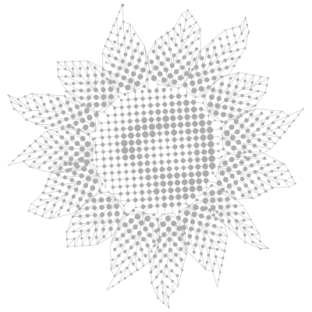Complex soil analysis
Complex soil analysis, include determination of basic and additional agricultural chemistry parameters (acidity of soil, organic matter, maintenance of accessible forms of nitrogen, phosphorus, potassium, micronutrients, sulphur, conductivity, soil texture) for finding out of potential of soil and optimization of mineral nutrition of plants.
Knowing acidity of soil solution it is possible to pick up cultures which will perfectly feel in these terms, the question of land-reclamation of soil also impossible decide without determination of this parameter. By means of fertilizers it is possible to correct acidity of soil coming from the necessities of culture. Availability to the plants of phosphorus and micronutrients similarly straight depends on acidity of soil.
Content of organic matter – influence on fertility of soil and plant’s nutrition. Its content in soils hesitates from 1-3% to 8-10% (in chernozems). There is a basic supply of nitrogen in an organic matter, therefore soils, containing a more organic matter, have a lot of nitrogen. Organic matter also has sulphur and phosphorus. In the process of mineralization of organic matter, nitrogen, phosphorus and sulphur pass to the accessible for plants mineral form.
Compounds of nitrogen, phosphorus and potassium are basic elements of nutrition of plants, the consumption of which takes place in great quantity. Knowing levels maintenance of these elements in soil, we can exactly define the amount of applying fertilizers at deficiency or shorten expenses on application of basic fertilizers at their surplus. It will allow us not violating thin balance of elements of nutrition in soil.
Conductivity (content of exchangeable salts). Parameter which shows general salinity, and if such goes out outside optimal parameters, it can result in death of plants on this area. The osmotic pressure of soil solution and absorption of water by the roots of plants depend on the concentration of dissolved materials. On salinity soils with a large osmotic pressure absorption of water by plants has difficulty.
Content of micronutrients. Some agriculturists think that determination in soil of maintenance of micronutrients is superfluous. But it is misbelieve! Micronutrients are a main factor in the receipt of high harvest of good value. Zinc, iron, copper, manganese, cobalt, boron and molybdenum are catalysts of biochemical processes. They are responsible for the construction of the enzymic systems and plants use of basic elements of nutrition. Micronutrients can come forward as ‘medicine’ at violation of nutrition of plants or defeat their illnesses. Plants variously behave to the consumption of micronutrients, distinguish the cultures of active removing of micronutrients (vegetable cultures on irrigation), middle removing are root crops, vegetables, and low removing are the field grain-crops, breads. For every culture there is a set of certain elements, to maintenance of which it produces enhance able requirements.
A calcium and magnesium is an inalienable parameter of agrichemical analysis of soil. Their surplus or deficiency in soil similarly negatively influences on maintenance and availability of phosphates and sulfates for plants. Therefore after these parameters it is needed to watch and correct them.
Sulphur (sulfate-ion). The consumption of sulphur by plants take place less, than nitrogen, phosphorus and potassium, however application of sulphur is very important for forming of high harvest. Sulphur is in close connection with nitrogen, because both these elements are needed for forming of albumens in plants. Requirement in sulphur of such cultures as rape, soybean and sunflower is very high.
Texture of soil is ratio of sand, clay and silt in soil. Determination of this parameter helps to correct the doses of applying fertilizers on different soils. Sandy soils differ in subzero maintenance of elements of nutrition, that is conditioned by their leaching in deeper layers, therefore quite often on such soils recommend the enhance able doses of fertilizers and fractional applying.
Loamy soils are optimal soils for growing of cultures. The elements of nutrition are accessible to the plants and doses are corrected only from technology of till (at irrigation).
Clay soils contain plenty of silt fraction, in this connection they richer by the elements of nutrition, then sandy and sandy loam soils.
Consequently, texture of soil considerably influences on composition and properties of soil, and also receipt and adaption of nutrition elements to the plants.
Testing of soil today is the optimal decision of problem of decline of expenses at the production of agricultural goods as for small farms, which do not have the opportunity to buy mineral fertilizers in great amounts, and for large producers. It is arrived by the exact and reasonable applying on fertilizers, and similarly by possibility of planning of costs.
Write to us
and we will find an opportunity
for cooperation


